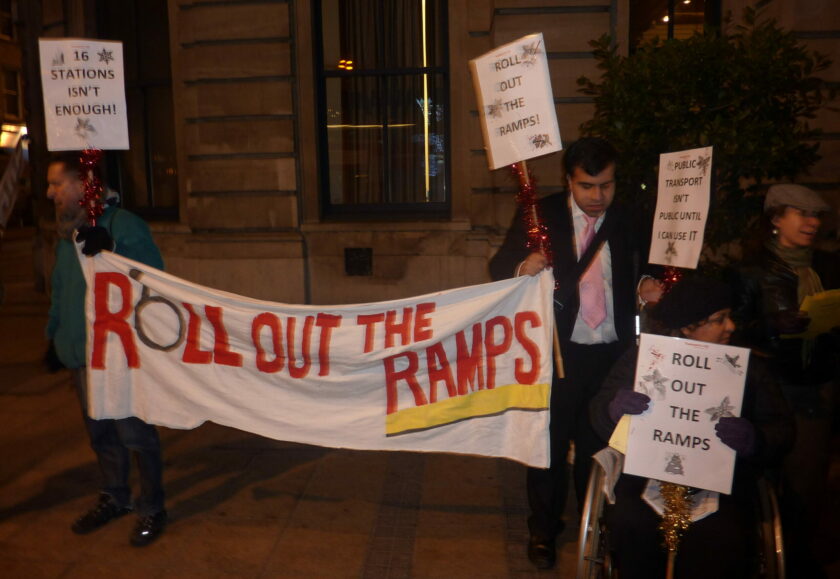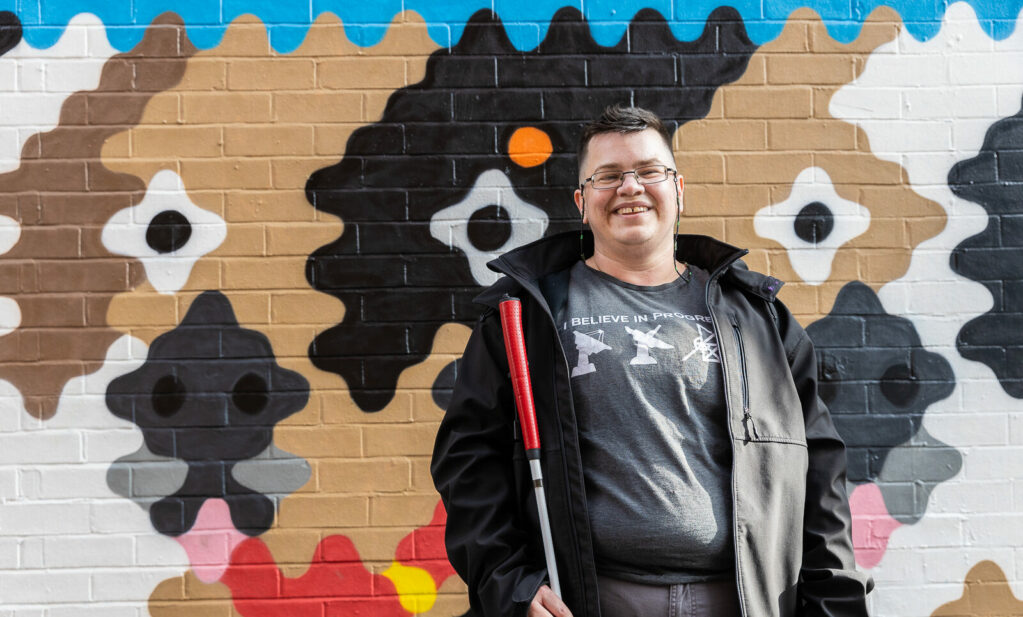Roll out the Ramps!
Transport for All
Transport for London recently introduced new temporary manual boarding ramps at 16 Underground stations for the Olympic Games. We're pushing for the ramps to stay, and be rolled out further.

Transport for London (TfL) recently introduced temporary manual boarding ramps at 16 Underground stations during the Olympic and Paralympics Games. Ramps enable wheelchair users and scooter users to overcome the gap between the train and the platform.
At present, the majority of the Tube remains out of bounds to disabled Londoners. Even when there is a lift to the platform, often the step or gap between platform and train means that some disabled people (particularly wheelchair users) are not able to board or disembark from the train.
Installing a legacy of accessible transport
TfL have said that “if they prove popular“, they will “look to see how their use can be extended beyond the Games“. But this is not enough. We are demanding a commitment to keeping the ramps in operation. After the last medal has been handed out, disabled Londoners will continue to need to travel to work; to see friends and family, and to get out and about in this great city. We Londoners deserve a legacy of accessible transport continuing beyond the Games.
Transport for All have sent a letter to the Mayor of London, calling for the Manual Boarding Ramps (MBRs) to remain in place, and to be introduced at every station where their use is suitable. This could open up as many as 34 extra stations to wheelchair users for the first time.
Download our letter to the Mayor (PDF)
Downlaod our letter to the Mayor (Word)
TfA have received great feedback from people who have been using the ramps all over London. All agree that using the ramps is very simple, and that staff and passenger attitudes are ‘superb’ Transport for All member, Andy, told us last week that, enabled by the ramps, he had used the Tube for the first time in 20 years.
A cost-effective option
Furthermore, manual ramps are not expensive. Through a Freedom of Information request, we discovered that ramps cost ramps between £265 and £510 each, depending on the exact specification. The fixings cost £280 each. Installation can cost up to £750 per MBR, depending on the quantity involved.* Obviously there is also a cost in relation to staff time and training, but having used the ramps at several stations and spoken to staff, they are extremely easy to use.
To put this in context, in this financial year, TfL received a grant from the Department of Transport of £881 million upgrades to the Tube network. The cost of manual ramps is a tiny fraction of this.
The cost of installing the MBRs certainly seems to be a reasonable adjustment to enable wheelchair users to use stations that are currently off limits. Having paid for installation and staff training, it would seem ludicrous for TfL to simply remove the ramps from the stations after the Games.
In the longer term, the best solution for stations with a step between platform and train is to raise the level of the platform – as TfL has done on a number of Tube stations. Platform humps mean that disabled people need not be dependent on a member of staff, and can wheel on and off independently.
But in the short term, and for stations with a gap (as opposed to a step) between platform and train, manual ramps are a simple, effective way of opening up the Tube to disabled passengers.
Transport for All call on the Mayor to ensure that after the Paralympics, TfL:
- continue to make use of the manual ramps as a short-term solution to access onto the train
- roll out the introduction of ramps at every suitable Underground station
- and to pledge a ‘rapid response’ to every broken down lift.
*All prices exclude VAT


